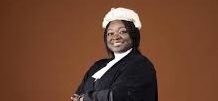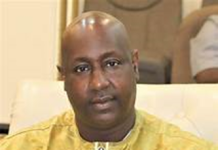Continuation of the Presentation by Lamin Fatty at the World Press Freedom Day Symposium by the GPU Sailu Bah reporting Mr Lamin Fatty, Managing Director Standard Newspaper, made a presentation on Journalism in the Digital age – evaluation of the prospects and challenges of the information society at Gambia Press Union World Press Freedom Day symposium. Below is the continuation of the full text of his presentation: Hypothesis In this presentation, I will argue that the classic journalistic values don’t change. Based on the values, the fundamentals of journalism, on how a journalist does his job will not change. However, what (functions) he or she is ought to do and how (practices) he or she reaches those functions/goals is subject to change because of the societal and technological changes. For example, as for the practice, since there are new tools available a journalist will be forced to use them to please the new standards of the public. There are new ways and strategies to practice those functions, meaning there might be new roles for journalists ahead. It is a process of mining public knowledge to add value to the community. Charlie Beckett, author of Super Media describes it as “the journalist still reports, edits, packages the news. But the process is continually shared. The networked journalist changes from being a gatekeeper who delivers to a facilitator who connects.” The classical functions of a journalist The basis of what a journalist does is telling stories. He (she) is an information provider. He gathers news based on facts rather than on opinions in an objective way. This means he or she is giving a balanced report between all the parties involved without any judgment. In this way he or she is providing the information the public needs in order to have a healthy citizenship. Journalism is a service in the public’s interest and for that matter also one in the interest of democracy (Zelizer, in Overholser & Hall Jamieson, 2005). First, in order to come to the journalistic functions, we should consider the journalistic values. Based on these the journalist accomplishes his (her) functions. Defining journalistic values I will use the five journalistic values mentioned by Deuze (2005) to give a closer look at how journalists operate whenever they are gathering and presenting information, regardless of what the medium or age it is. Public service: journalists gather, present and disseminate news in the public interest. They are the watchdog of society for its citizens. Objectivity: journalists have to be neutral, impartial and fair. Every party involved in a certain issue should be able to comment on their actions equally. Autonomy: a journalist must be independent. He/she must be free to report on what he/she sees and hears. Immediacy: In order to bring something new, immediacy is necessary. Journalists must act fast; they have to chase the news in order to be factual. Ethics: Journalists must have a sense of what they can and can’t do. These ‘rules’ are merely based on common sense, such as being fair and reporting truthfully. Based on these values a journalist accomplishes his functions. These values can be considered as the fundamentals of journalism and these fundamentals are the raison d’être of journalists. The changing media landscape Technology has an impact on every aspect of society so is journalism. The internet has been a source of concern as in threats, but also one of the opportunities since the popularization of the web in the mid 1990’s (Boczkowski, 2004). In this section I will discuss what these technological changes embrace and what influence they have on journalism. In order to give a better understanding of what the impact of technology is, I will first list the features of new media such as the internet. What are the features of the digital age? The key characteristics of the internet and its possibilities are: Interactivity: This means you can make the user part of the news experience. This feature is extremely important in the digital age. Consumers want to be involved in the production process. As soon as they consummate the media, they also produce something for example, after reading an article, they would want to comment on it. Customization of content: The users can choose for themselves to what content they want to be exposed. They can either do that by pulling content (online archives) or by pushing it (subscribe to newsletters). Custom content allows the user to create their own homepage at a search- or news site. The public is in control of their media consumption. Individuals can make up their own news. Hypertext: With hyperlinks additional information can be added to an article. For example linking to the source or to an info graphic. Convergence: This means that a story online can be told across different media formats. Image, text and sound can be integrated in one story. These three features of the digital age have influence on the journalistic practice, meaning how a journalist gathers and present information. Journalism revisited The features of the new media affect the classical functions of journalists. Interactivity means that journalists have to interact with the public. They should take their contributions as in information, rectifications and feedback seriously and they should be open to discussion. Public contributions could be useful for an even more complete coverage of a certain topic, to open a discussion or the simply connect the public to the medium. Several journalists such as Robert Niles (2007) and Mark Chavannes (2007) encourage this attitude towards the public. By doing that a journalist isn’t solely an information provider anymore. At that moment the one way communication is transforming into a two way communication. Story telling journalism changes into a ‘dialogue journalism’, which also alters the position of the journalist. He isn’t so much above the public anymore, but among them. Multi- media changes the way of storytelling. Multiple formats can be used to tell a single story. It’s up to the journalist to use the adequate ones to prevent the public from being bored and ‘zap’ (public control) away to another news site. This means the composition has to be optimal to gain some attention among millions of other information providers, including consumers, doing the same thing. This also implies that a journalist nowadays has to be more than just a good reporter or writer. He has to be able to work with audiovisual material and distinguish what the best way is to portray images and sound that will do some justice to the story. Technique requires more skills of a journalist. In short What have always been quite steady are the journalistic values and the journalistic functions. The values are public service, objectivity, autonomy, immediacy and ethics. The journalistic functions are information providing, serving democracy, setting an agenda and being a watchdog. I’m claiming the values will remain unaltered, since those differentiate journalists from other writers or information providers. The functions are subject to change. They are because of the new digital features, which are interactivity, customization and multimedia usage. They transform journalism in four ways: convergence of news, the tools a journalist works with, the hierarchy of the newsroom and the notion of the public. Those changes affect the journalistic practice, how he works. New features give meaning to new ways of acting. But might also change the journalistic functions, what he does, since those are challenged by the public control. By analyzing publications written or about the thoughts of journalists on how journalism can survive the societal and technological changes, I want to find out what journalists will have to change in the future, in terms of what and how. In transition: A change is in transition when it is still ongoing or being done. For example, statements about how the internet has changed things or the public gaining power are done alternations. The internet is there and the power as well. What is still in transition are the opportunities that internet has to offer as gaining more power by contributing to journalistic publications. Future: ‘We can’t be afraid of reaching our audience in new ways. It will be one of the keys to our industry’s successful future (Curley).’ Just like this one, all the statements enlisted in future changes are about how the author thinks it should be, what should be done, what is needed or what will happen in the future? TO BE CONTINUED ]]>
© 2019 Foroyaa Newspaper - Site by DigiTech Solutions

















